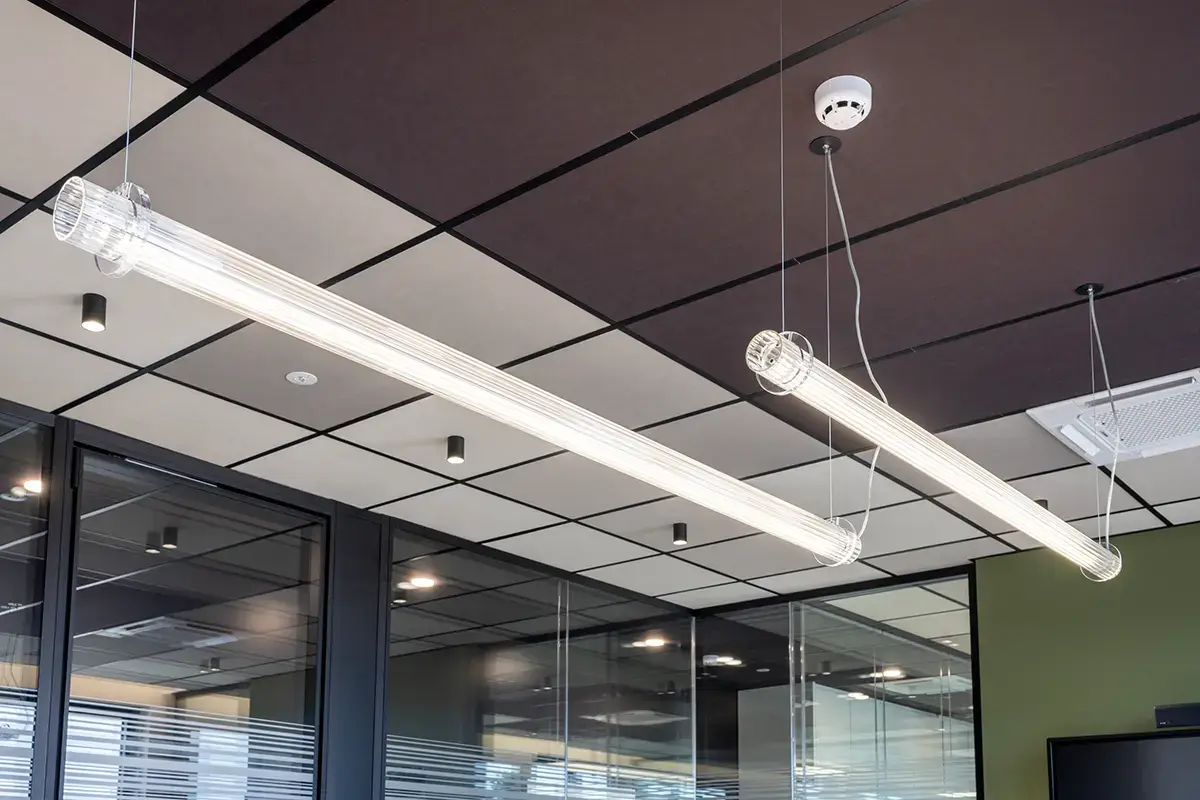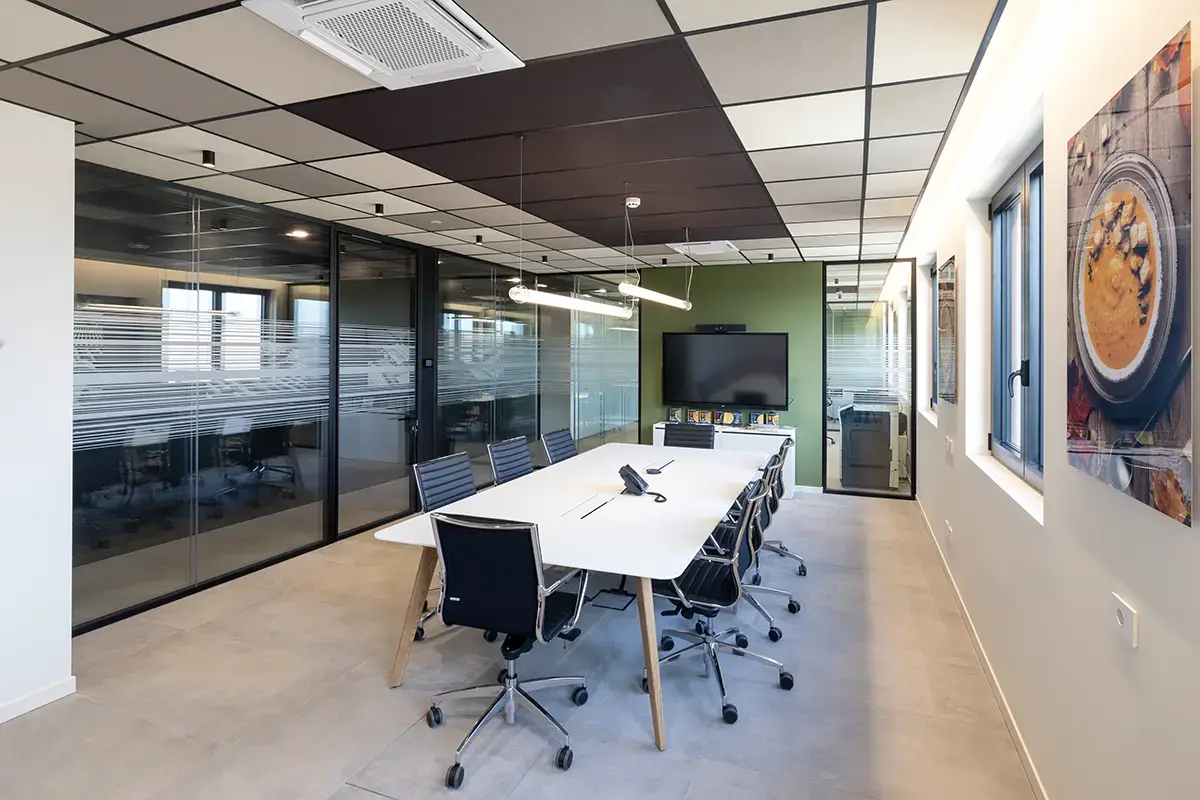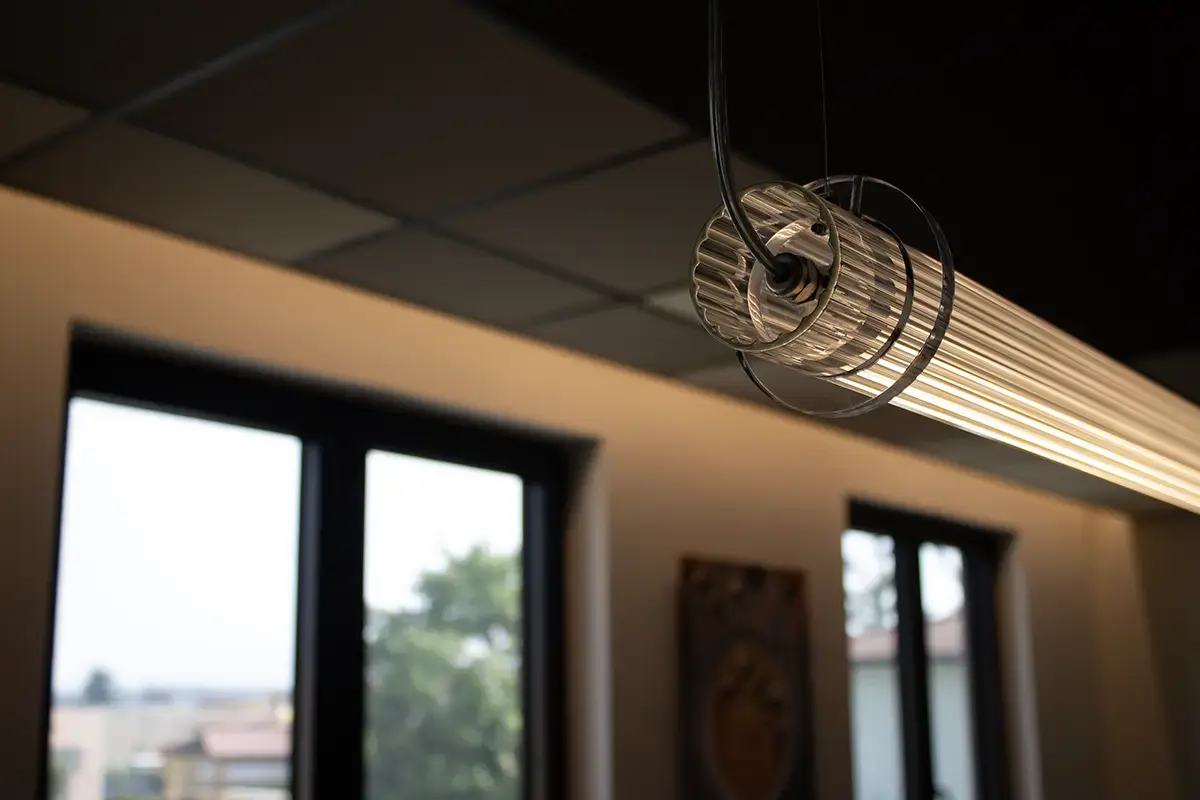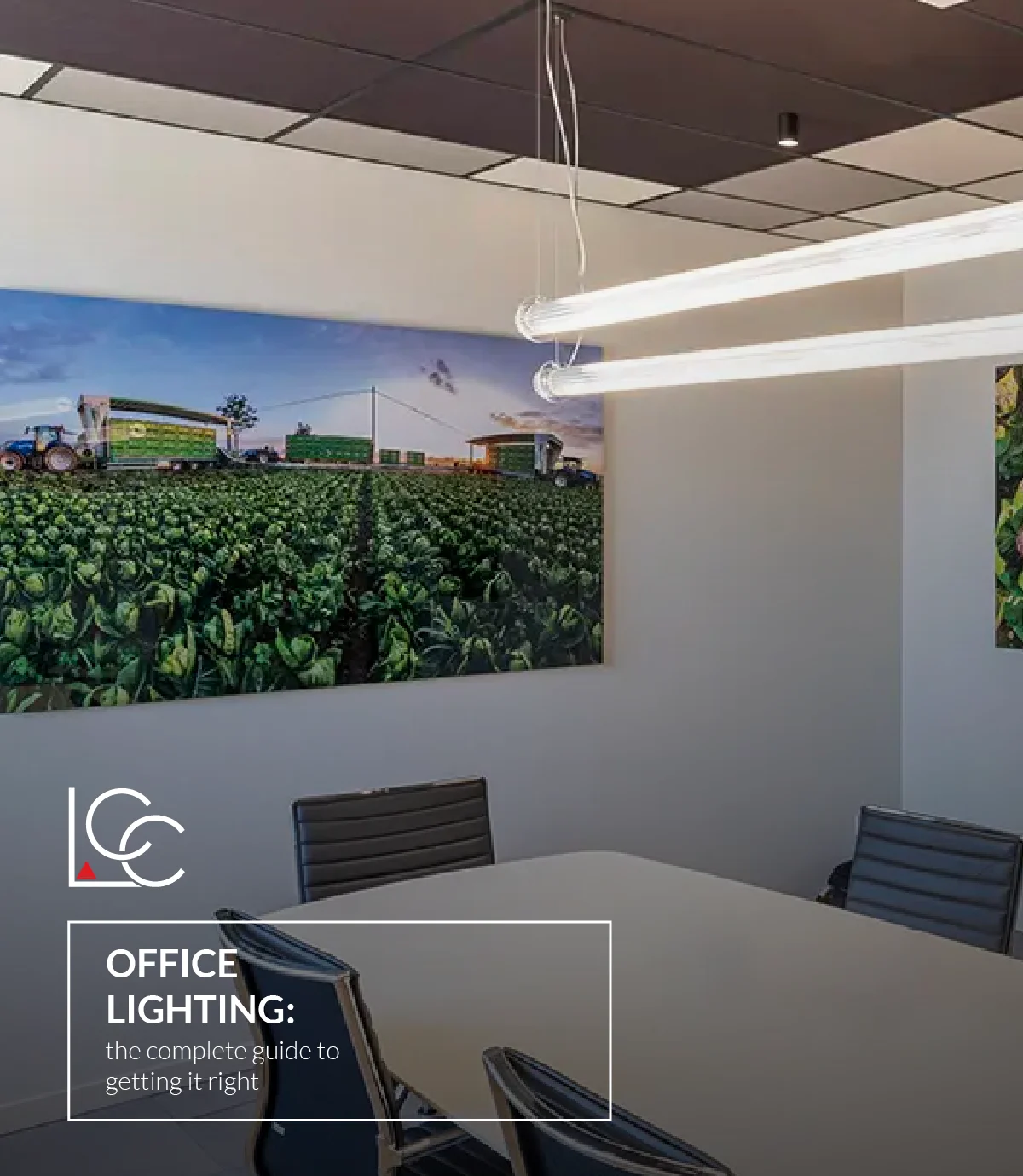Why lighting matters and reference standards
Office lighting is not just an aesthetic detail: it is a key element in ensuring efficiency, safety, and well-being in the workplace. Adequate lighting helps reduce eye strain, prevent migraines and loss of focus, and stimulate good mood and productivity.
Scientific studies confirm that well-lit environments improve performance, while inadequate lighting causes drowsiness and reduces efficiency.
From a regulatory perspective, Legislative Decree 81/08 and standard UNI EN ISO 12464-1 define precise requirements for workplace lighting. The regulations distinguish three main areas:
- Task area: where main activities are performed.
- Immediate surrounding area: for visual comfort and safety.
- Background area: to avoid contrasts and glare.
These rules set parameters for illuminance, light distribution, and design criteria, including the proper use of natural light.

Design and preliminary assessment
Before installing any system, it is essential to analyze:
- Available natural light (building orientation, windows, skylights).
- Room dimensions and furniture layout.
- Wall colors and reflective surfaces.
- Type of activities carried out in each area.
Workstations require direct, uniform light (about 500 lux), while meeting rooms and relaxation areas can be lit with softer, diffuse light for comfort and social interaction.
Afterward, the choice of light sources (LEDs, ceiling lights, desk lamps, spotlights), their distribution, color temperature, and—if possible—the integration of presence sensors and dimmers, allows for optimized energy consumption and constant lighting conditions.
A well-designed lighting project, supported by software simulations, makes it possible to predict real light behavior and correct any issues before installation.
What to choose: lamp types and technological solutions

General lighting
- LED ceiling lights: uniform, energy-efficient, and long-lasting.
- Pendant lamps: ideal for meeting rooms, open spaces, and lounge areas, providing diffuse light while contributing to aesthetics.

Direct and adjustable lighting
- Adjustable desk lamps: allow employees to modulate light intensity according to their needs.
- Adjustable or recessed spotlights: highlight specific areas such as reception desks or presentation spaces, without causing glare.
Innovative and smart solutions
- Sound-absorbing lamps: integrated with noise-reducing materials, they enhance acoustic comfort and worker concentration while providing uniform lighting.
- UV-C sanitizing lamps: draw in air through axial fans, pass it through a high-power germicidal UV-C source, and release sanitized air free of bacteria, viruses, and germs, improving air quality.
- Self-adjusting lamps: equipped with presence sensors and learning functions, they maintain optimal brightness levels and reduce energy consumption.
Indirect and concealed lighting
Integrating indirect or hidden lighting distributes light evenly, prevents glare, and creates visual comfort, especially in open spaces and meeting rooms. The light appears to flow naturally, enhancing spaces without being intrusive.
Decorative elements and space enhancement
To add a greater sense of importance and authority in areas visible to visitors—such as entrances, waiting rooms, and receptions—scenographic and designer lamps can be used. These solutions not only illuminate the environment but also act as decorative pieces, enhancing the space and strengthening the professional image of the office.
By combining functional lighting and design objects, you can create welcoming, elegant, and refined environments that leave a positive impression on clients and visitors.
How to light different areas
- Open spaces: uniform lighting with no shadow zones, preferably LED ceiling panels to reduce monitor glare.
- Common areas (corridors, break rooms, reception): warm, welcoming light, with pendant lamps or adjustable spotlights for comfort and aesthetic value.
- Workstations: direct and adjustable lighting, complemented by desk lamps and presence sensors.
- Meeting rooms: comfortable lighting over the central table, combining diffuse ceiling light with pendant lamps.
The integration of natural and artificial light ensures an optimal balance throughout the day, reducing fatigue and energy consumption.
Illuminazione ufficio: conclusioni
An office lighting project is an investment that enhances productivity, comfort, and safety, while also improving the aesthetic appeal of spaces. Careful selection of light sources, intensity, and color temperature ensures a healthy, efficient, and welcoming workplace.
If you want to develop a tailored lighting design for your office, contact us. After a thorough analysis of the space and needs, we will identify the most suitable solution, handling the design, choice of fixtures, and installation.
